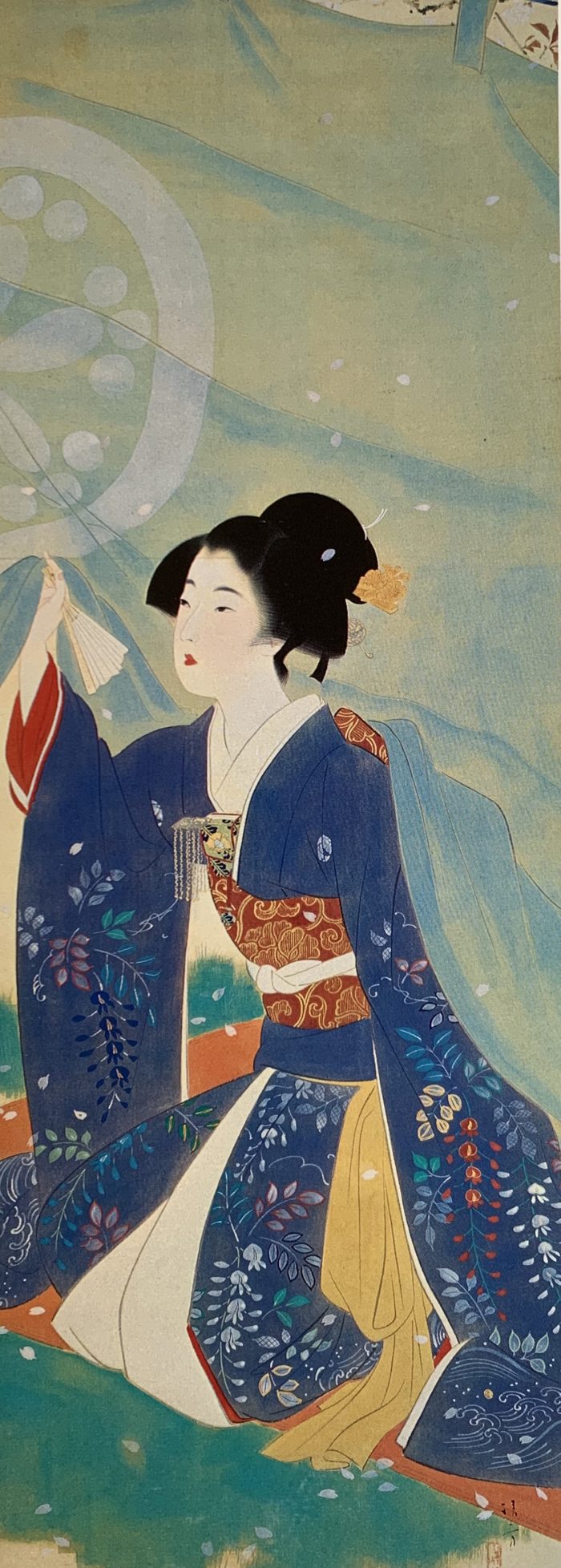“I don’t know when we can enjoy watching flowers without care, but anyway, the spring of flowers has came after being released from the terrible pressure of wartime.” Japanese painter Kiyokata Kaburaki(1878-1972) wrote this essay in April 1946. One year earlier, in the spring of Japan, It was still in the midst of World War II .
Now, we hope that next year will be the spring to enjoy cherry blossom viewing without care.
Kiyokata was one of the leading Japanese painters of the modern era, and was highly regarded as an essayist. Here are his paintings and essays along the four seasons in Japan.
In the opening essay, when Kiyokata refers to “flowers”, the flower is, of course, Sakura. He recalls that he did not go out during the cherry blossom season and rarely attends Sakura viewing parties since he was young because he hates crowds. However, during the cherry blossom viewing season, curtains and flags for parties were set up, and the sound of bells and drums was heard from a boat decorated with lanterns, so he did not feel uncomfortable.
The next picture is his “Hanamimaku” (a curtain for cherry-blossom viewing). A part is held inside the curtain. A Geisha called at the table turns over the curtain and appears. The kimono pattern is wisteria flowers, one month ahead of the season. The Obi is with peony pattern that is early for two months. There, fluttering cherry petals fall.

The culture of appreciating flowers has been passed down from ancient China to Japan. The object of appreciation was plum blossom. However, around the 9th century, cherry blossoms became the object. It was during the Edo period (1605-1967) that cherry-blossom viewing, which had long been a pleasure of the upper class, became a pleasure for the common people.
In Edo (now Tokyo), several cherry blossom spots have been created. Among them, Kiyokata said, it is the best on the banks of the Sumida River. And reminisce about the various scenes that appear along this river. In the Meiji era(1868-1912), a modern sport boat racing by college students became a specialty. He miss seasonal sweets such as sakura mochi and dumplings.
Hanami or cherry-blossom viewing is not just an act of appreciating cherry blossoms, it has become a diverse leisure culture, which has become the subject of literature, painting and theater. In that sense, it is one of the representative Japanese cultures.



The top three images show the Edo period cherry blossom viewing. The female figure on the left is a ukiyoe by Toyonobu Ishikawa (1711-1785). In the upper right, Utamaro Kitagawa (1753? -1866) depicts the cherry blossom viewing scenery of Ueno. On the lower left is a view of Yoshiwara’s famous cherry blossoms. This is part of a guidebook of cherry blossom viewing spots.
Kiyokata places women in a calm, clear atmosphere that does not feel the hustle and bustle of cherry blossom viewing.


